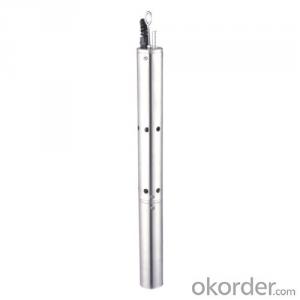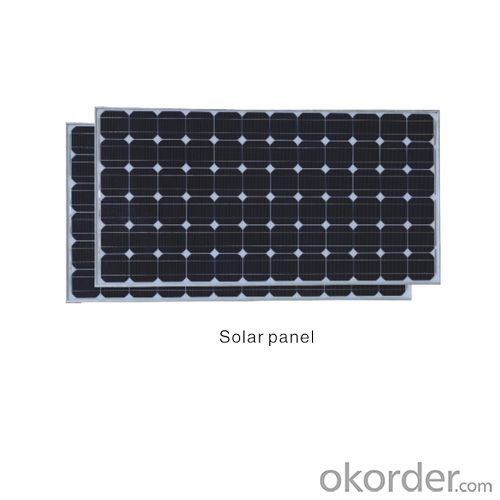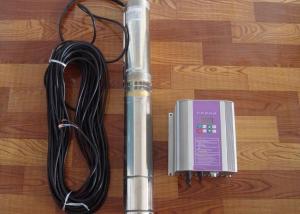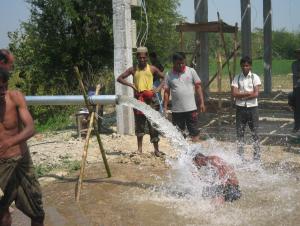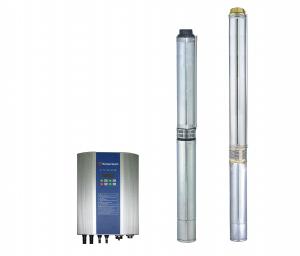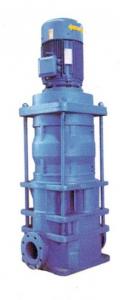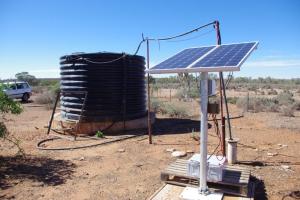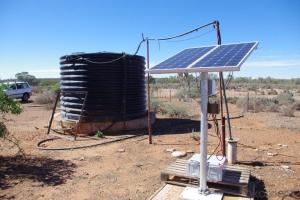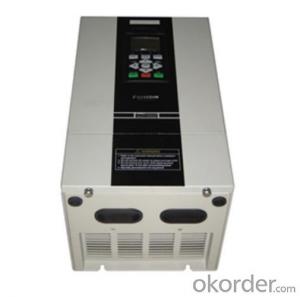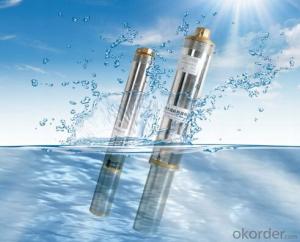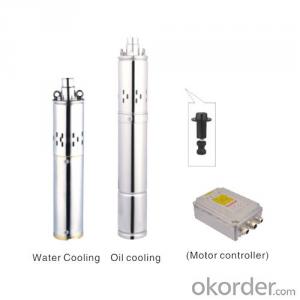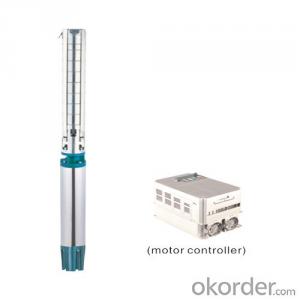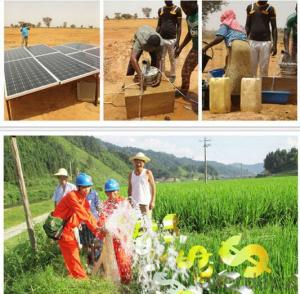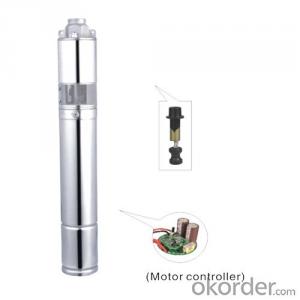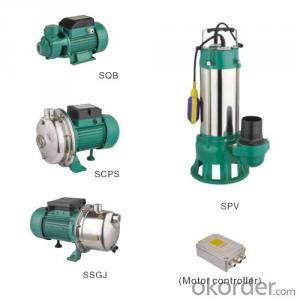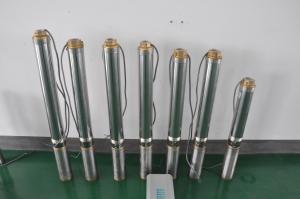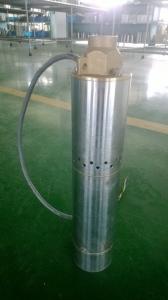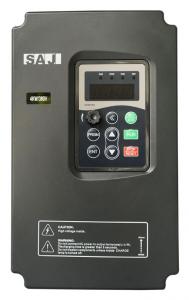RPS Solar Pump 2spv for Easy Install Wells with CE Certification
- Loading Port:
- Ningbo
- Payment Terms:
- TT OR LC
- Min Order Qty:
- 10 unit
- Supply Capability:
- 100000 unit/month
OKorder Service Pledge
OKorder Financial Service
You Might Also Like
Specifications
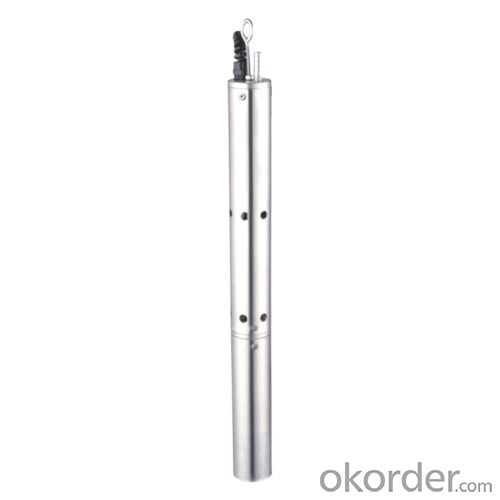
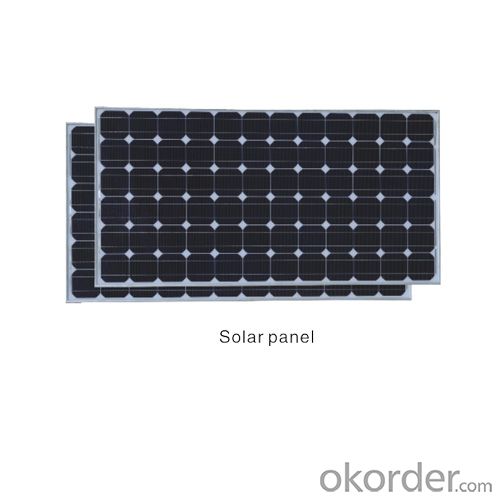
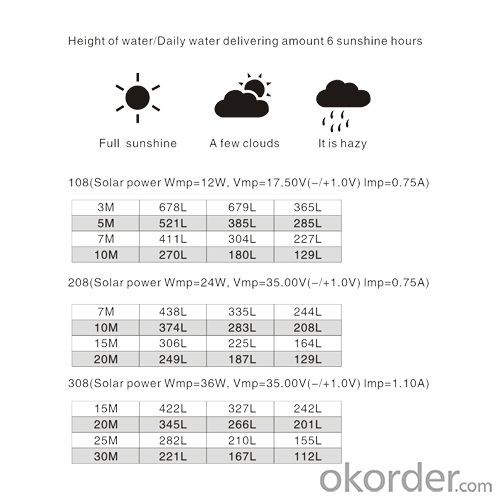
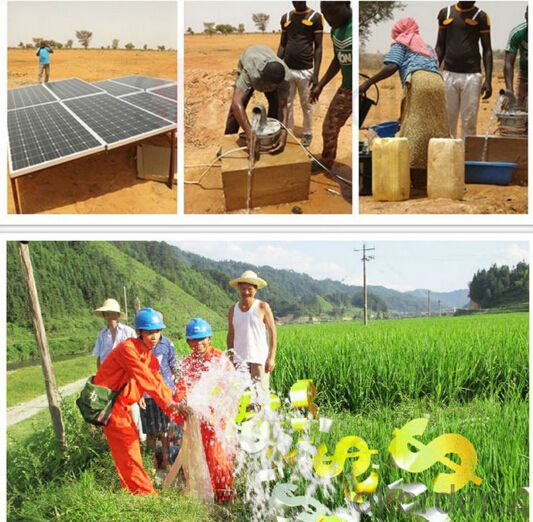
Self-sufficient,works with sun radiation
More sunlight more water pumped
Low maintenance and auto matic operation for years
Clean Energy,No contamination,No Noise.
Low borehole drlling cost—a diameter of6.0cm is sufficient
Easy to operate and maintain
NO | Ltem | Unit | KMP308 | KMP208 | KMP108 |
1 | Max.voltage | V | 35(+/-1.0) | 35(+/-1.0) | |
2 | Max.power | A | 36(+3.0) | 36(+3.0) | |
3 | Working temperature | W | 0.05-1.10 | 0.05-1.10 | |
4 | Solar panel | Pieces | 2pcs18W panel | 2pcs18W panel | |
5 | Working temperature | t | +1.0-+25 | + 1,0-+25(special treatment possible) | |
6 | Min water depth for operation | cm | 36 | 36(special treatment possible) | |
7 | Sate for"dry running" | Yes(using solar panels) | |||
8 | Oper ation | hangling | hangling | hangling | |
9 | Diameter of pump | cm | 4.90(+0.05) | 4.90(+0.05) | 4.90(+0.05) |
10 | Diameter inclusive filter | mm | 80.0(+2.0) | 80.0(+2.0) | 80.0(+2.0) |
11 | Length of pump | cm | 52 | 52 | 52 |
12 | Diameter of cable | mm | 7.5(+/-0.2) | 7.5(+/-0.2) | 7.5(+/-0.2) |
13 | Internal diameter of water pipe | mm | 9.2(+/-0.2) | 9.2(+/-0.2) | 9.2(+/-0.2) |
14 | External diameter of water pipe | mm | 11.0(+/-0.2) | 11.0(+/—0.2) | 11.0(+/-0.2) |
15 | Length of cable | m | 30.5(+/-0.2) (special treatment possible) | 20.5(+/-0.2) (special treatment possible) | 10.5(+/-0.2) (special treatment possible) |
16 | Length of water pipe | m | 30.5(+/-0.2) | 20.5(+/-0.2) | 10.5(+/-0.2) |
17 | Accessories of pump | Lifting rope,water pipe,foam filter, silter,silicone tube,O-ring,main spring, hexagonal key(8mm and 3mm),resin-free oil. | |||
Product Description
Product Feature
Solar submersible pumps is the efficient equipment to extract groundwater in applications of agricultural irrigation, human and livestock water in plateau and mountain areas, etc.
1. Motor and shell made of stainless steel
2. Stainless steel shaft and coupling
3. High strength & wear resistance stainless steel impeller and diversion shell
4. Sand resistance, anti-rust, pollution-free, long life time
5. Small size, light and easy to ship
6. Easy installation and easy maintain
7. High efficient smart controller with multiple protections: over-temperature protection,
short-current protection, over-load and under-voltage protection. Safe and reliable to use.
Price includes pump with controller. Solar PV panels may be purchased separately.






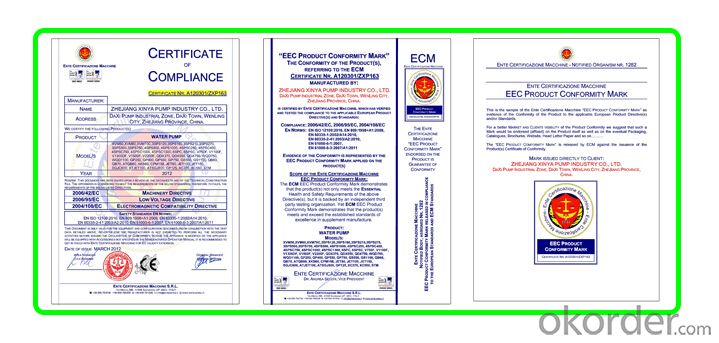
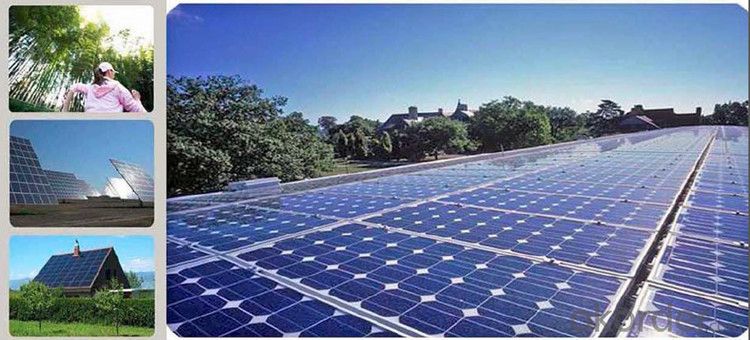
CNBMSOLAR is a world-leading and Vertical integrated manufacturer of high-performance with Silicon, Wafer, Cells,
Modules, which convert sunlight into electricity for residential, commercial, and utility-scale power generation.
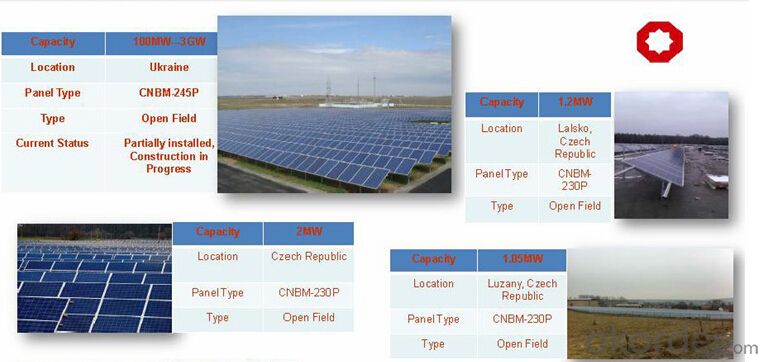
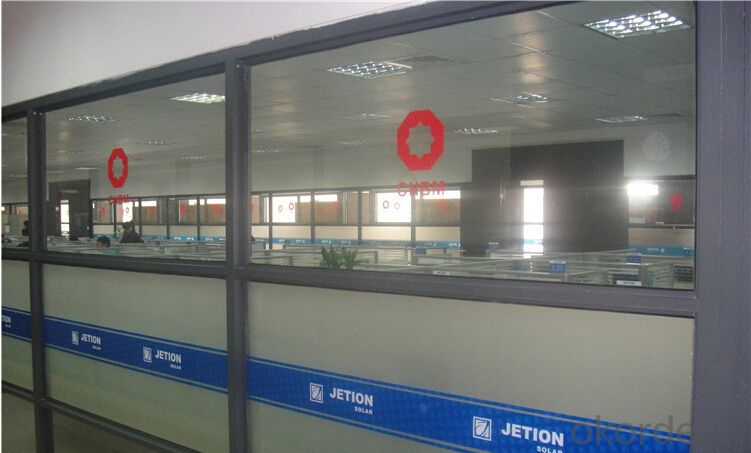
FAQ
Q1. When can I get the quotation?
We usually quote within 24 hours after we get your inquiry. If you are urgent to get the price, please send the message on trade manager or call us directly.
Q2. Can I buy one as sample?
Yes, of course. MOQ of solar pump is 1 piece. For the other kind of products (water pump, air compressor and welding machine), you need to pay all the fee when we make the sample.
Q3. Can you make OEM?
Yes, you can put your logo and brand on the box.
Q4. What is your main market?
Eastern Europe, Southeast Asia. Mid East, South America, Northern Europe.
- Q: Can a solar pump be used for irrigation purposes?
- Yes, a solar pump can be used for irrigation purposes. It harnesses solar energy to power the pump, providing a sustainable and cost-effective solution for pumping water to irrigate crops or gardens.
- Q: How does the angle and orientation of solar panels affect the performance of a solar pump?
- The performance of a solar pump is greatly affected by the angle and orientation of the solar panels. The angle determines the amount of sunlight received, while the orientation dictates the direction the panels face. Efficiency of solar panels is determined by the angle at which they are installed, as this affects the amount of sunlight they can capture. Sunlight is converted into electricity by solar panels, and the tilt angle determines the quantity of sunlight captured. The optimal angle is dependent on the geographical location of the solar pump. For example, regions near the equator benefit from a flat or low tilt angle to maximize sun exposure year-round. Conversely, higher latitudes require a steeper tilt angle to compensate for lower sunlight intensity. Orientation refers to the direction solar panels face, usually either south or north depending on the hemisphere. In the Northern Hemisphere, south-facing panels capture the maximum sunlight. By facing south, panels receive sunlight for the longest duration during the day. Similarly, in the Southern Hemisphere, north-facing panels provide optimal performance. The angle and orientation of solar panels also influence the angle of incidence, which is the angle at which sunlight strikes the panel surface. Maximum efficiency is achieved when sunlight strikes the panels perpendicularly. If the angle of incidence is too high or low, panel efficiency decreases. Adjusting the tilt angle and orientation optimizes the angle of incidence, maximizing energy output from the solar pump. In conclusion, the angle and orientation of solar panels are crucial in determining the performance of a solar pump. By adjusting these factors based on the geographical location, it is possible to optimize sunlight capture and maximize the efficiency of the solar pump.
- Q: Can solar pumps be used for water supply in agricultural research or experimental farms?
- Yes, solar pumps can be used for water supply in agricultural research or experimental farms. Solar pumps are a sustainable and cost-effective alternative to traditional pumps, as they utilize renewable energy from the sun to power the pumping system. They can help ensure a reliable water supply for irrigation purposes in these farms, reducing dependence on fossil fuels and lowering operational costs. Additionally, solar pumps are environmentally friendly and contribute to the overall sustainability goals of agricultural research and experimental farms.
- Q: How does a solar pump help in reducing water wastage?
- A solar pump helps in reducing water wastage by using renewable energy from the sun to power the pump and pump water. This eliminates the need for electricity or fossil fuels, which reduces the carbon footprint and energy consumption. Additionally, solar pumps typically have sensors and controls that optimize water usage, preventing over-watering or excessive use, thus minimizing water wastage.
- Q: How does the altitude or elevation affect the performance of a solar pump?
- The altitude or elevation affects the performance of a solar pump primarily due to the changes in atmospheric pressure. As one goes higher in altitude, the atmospheric pressure decreases, which in turn affects the pump's ability to generate suction and lift water. At higher altitudes, the pump may experience reduced efficiency and lower water output. Additionally, lower atmospheric pressure can also impact the efficiency of the solar panels used to power the pump, leading to decreased power generation. Therefore, it is important to consider and adjust for the altitude or elevation when designing and installing a solar pump system.
- Q: Can a solar pump be used for water supply in remote areas?
- Certainly, water supply in remote areas can be effectively facilitated by the utilization of solar pumps. These pumps offer an excellent solution for regions that lack access to electricity from the grid or where the reliability of grid power is questionable. By harnessing solar energy, these pumps prove to be highly economical and environmentally friendly. The mechanism of solar pumps involves the conversion of sunlight into electricity using photovoltaic (PV) panels. This generated electricity powers the pump, which draws water from various sources such as wells, rivers, or reservoirs. The water can then be stored in tanks or directly distributed to designated areas for multiple applications, including drinking, irrigation, or livestock purposes. The application of solar pumps in remote areas presents numerous advantages. Primarily, they diminish the reliance on traditional fuel-powered pumps, thereby eliminating the need for fuel transportation and reducing carbon emissions. Furthermore, solar pumps require less maintenance and exhibit greater reliability compared to fuel-powered pumps. Additionally, their extended lifespan leads to reduced operational costs and enhanced efficiency. Moreover, solar pumps can be conveniently installed in remote areas without the necessity for complex infrastructure. This feature makes them an ideal solution for areas where conventional electricity supply is absent or impractical. Furthermore, solar pumps can be designed to function even in low-light conditions, ensuring a continuous water supply despite unpredictable weather patterns. To conclude, solar pumps represent a viable and efficient alternative for water supply in remote areas. They offer a sustainable and dependable water source while simultaneously reducing operational costs and environmental impact. The incorporation of solar pumps in such regions can significantly enhance access to clean water and contribute to the overall development and well-being of the communities.
- Q: Are solar pumps cost-effective compared to traditional pumps?
- Yes, solar pumps are generally considered to be cost-effective compared to traditional pumps. While the initial investment for solar pumps may be higher, they have lower operating costs as they rely on renewable energy from the sun. Solar pumps eliminate the need for fuel or electricity, reducing long-term expenses. Additionally, solar pumps require less maintenance and have a longer lifespan, further contributing to their cost-effectiveness.
- Q: Can a solar pump be used in conjunction with a storage system?
- Yes, a solar pump can be used in conjunction with a storage system. In fact, combining a solar pump with a storage system can offer several benefits. A storage system allows excess energy generated by the solar panels to be stored for later use, which can be particularly useful during periods of low sunlight or at night when the solar panels are not actively generating power. By connecting the solar pump to the storage system, the excess energy can be used to power the pump even when the sun is not shining. This ensures a continuous water supply, regardless of the time of day or weather conditions. Additionally, using a storage system with a solar pump can also help reduce the reliance on grid electricity, making it a more sustainable and cost-effective solution for water pumping needs.
- Q: Are there any special considerations for installing a solar pump in a coastal area?
- Installing a solar pump in a coastal area comes with several special considerations. First and foremost, the corrosive nature of saltwater is a major concern. Coastal areas have higher salt content in the air and soil, which can speed up the corrosion of metal components and electrical connections. Therefore, it is vital to select corrosion-resistant materials like stainless steel or marine-grade materials to ensure the durability of the solar pump system. Another factor to take into account is the possibility of extreme weather conditions in coastal areas. These regions are often susceptible to strong winds, storms, and even hurricanes. It is crucial to design and install the solar pump system in a manner that can withstand these weather events. This may involve properly securing the solar panels and equipment, as well as carefully choosing the installation location to minimize exposure to strong winds. Furthermore, being in close proximity to saltwater bodies can affect the water source for the pump. Saltwater or brackish water may require additional pre-treatment or filtration before it can be utilized with the pump system. This could entail the installation of a desalination system or the use of specialized filters to eliminate impurities and ensure the water quality is suitable for the pump. Lastly, the coastal environment may have specific regulations and permits that must be taken into consideration during the installation of a solar pump. It is crucial to conduct thorough research and comply with any local regulations pertaining to the installation of renewable energy systems in coastal areas. In conclusion, installing a solar pump in a coastal area necessitates careful consideration of corrosion resistance, weather resilience, water source quality, and compliance with local regulations. By addressing these unique considerations, the solar pump system can operate efficiently and effectively in the coastal environment.
- Q: Can a solar pump be used in areas with high salinity in the water?
- Yes, a solar pump can be used in areas with high salinity in the water. Solar pumps are typically designed to handle a wide range of water conditions, including high salinity. However, it is important to select a solar pump that is specifically designed for such conditions or has appropriate features, such as corrosion-resistant materials, to ensure its longevity and efficiency in areas with high salinity water.
Send your message to us
RPS Solar Pump 2spv for Easy Install Wells with CE Certification
- Loading Port:
- Ningbo
- Payment Terms:
- TT OR LC
- Min Order Qty:
- 10 unit
- Supply Capability:
- 100000 unit/month
OKorder Service Pledge
OKorder Financial Service
Similar products
Hot products
Hot Searches
Related keywords
